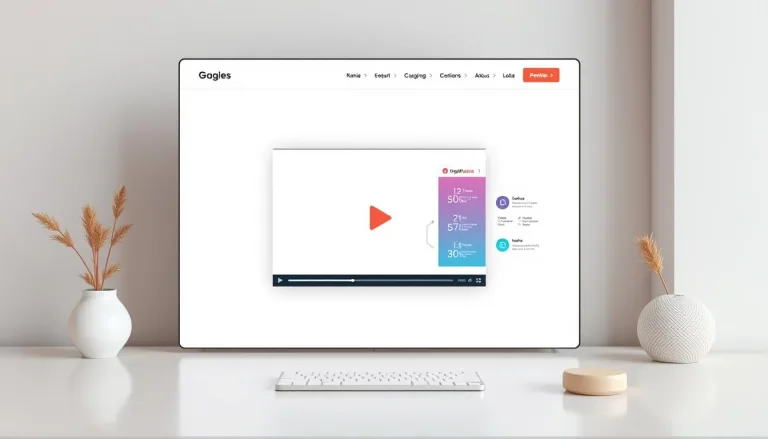Optimizing Content Structure for Better Ranking
Digital marketing experts know that creating website content is key to success online. They understand that search engine optimization needs careful planning and smart execution. This is to get noticed in a crowded digital world.
Today’s businesses must have strong SEO-friendly content plans that keep up with search engine changes. They need to do more than just use keywords. They must create detailed content structures that grab users’ attention and meet search engine standards.
Good content strategy means knowing the technical side while keeping the content valuable and relevant. Websites should make content that meets both user needs and search engine rules. This way, they offer a great experience for readers and search engines alike.
Companies that focus on creating strategic content can really boost their online presence. By using advanced website content techniques, brands can grow their digital presence. They can draw in the right audience and build strong connections in their market.
The world of search engine optimization is always changing. It keeps digital marketers on their toes, needing to learn and adapt to new tech and user habits.
Understanding Content Optimization Fundamentals
Digital content creation has changed how businesses talk online. Today, website copywriting is more than just placing text. It needs to be smart and talk to users’ needs while fitting complex search engine rules.
Good keyword optimization means knowing the digital marketing world well. Google’s systems can figure out if a page is relevant, even if it doesn’t use the exact search words.
What Makes Content SEO-Friendly
SEO-friendly content has key parts:
- Clear, engaging writing that answers user questions
- Structured information with logical flow
- Relevant, targeted keywords integrated naturally
- High-quality, original research and insights
Core Ranking Factors in 2024
Search engines look at content in many ways:
- User engagement metrics
- Content depth and comprehensiveness
- Mobile responsiveness
- Page loading speed
- Internal and external linking strategy
The Role of Search Engine Algorithms
Modern search algorithms use machine learning to get content’s context, intent, and meaning. They value content that shows expertise, offers unique value, and gives a smooth user experience.
Content creators should aim for meaningful, user-focused digital experiences. These should naturally match what search engines like.
Website Content Creation: Essential Best Practices

Creating successful web content is more than just writing. It involves a strategic approach. Content creation services are key in making digital experiences that grab attention and help with search engine rankings.
Effective website content management includes several important strategies:
- Know what your target audience needs and what they’re searching for
- Make original, high-quality content that offers real value
- Keep a regular schedule for publishing
- Make sure your content matches your brand’s voice and message
The heart of a good content strategy is a user-centric approach. When making web content, writers should aim to answer specific user questions and solve real problems.
| Content Creation Element | Key Considerations |
|---|---|
| Originality | Unique perspectives and insights |
| Relevance | Direct alignment with user search queries |
| Readability | Clear, concise language and structured format |
Professional content creation services help businesses build a strong content strategy. This strategy drives more organic traffic and boosts search engine rankings. By focusing on quality, relevance, and user experience, websites can make content that truly connects with their audience.
Structuring Your Content for Maximum Impact
Creating SEO-friendly content needs careful planning and precise steps. It’s not just about writing words. It’s about making a content strategy that appeals to both search engines and readers.
Good content structure includes key elements that boost your website’s search rankings.
Header Hierarchy Implementation
Headers are vital for organizing content and showing importance to search engines. A well-organized header structure helps both readers and algorithms understand your content’s structure.
- Use H1 for primary page title
- Utilize H2 for main section headings
- Apply H3 for subsection details
- Maintain logical progression
Optimal Content Length and Formatting
Search engines like detailed, valuable content. Different types of content need different lengths and formats.
| Content Type | Recommended Length | Key Formatting Tips |
|---|---|---|
| Blog Posts | 1000-1500 words | Use subheadings, bullet points |
| Product Pages | 300-500 words | Include clear descriptions |
| Pillar Content | 2000-3000 words | Comprehensive, structured sections |
Strategic Keyword Placement
Putting keywords in the right places is an art in website copywriting. Avoid keyword stuffing and aim for natural, meaningful use.
- Include primary keyword in first paragraph
- Use variations in subheadings
- Distribute keywords evenly
- Maintain natural readability
A smart content strategy turns your website into a powerful SEO tool. It draws in and keeps your target audience interested.
Technical SEO Elements for Better Rankings
Digital content creation is more than just writing well. Technical SEO elements are key to making your website more visible and improving search rankings. Search engines look at many technical factors to see if a website is trustworthy and easy to use.
To manage your website well, you need to know about important technical SEO parts. These parts greatly affect how well your website does in search results:
- Site Speed Optimization
- Mobile Responsiveness
- Secure HTTPS Connections
- XML Sitemaps
- Robots.txt Configuration
Search engines like Google favor websites with strong technical setups. Site speed is very important because it affects how users feel about your site. Websites that load in 2-3 seconds usually rank better.
| Technical SEO Element | Impact on Rankings | Optimization Strategy |
|---|---|---|
| Page Load Speed | High | Compress images, minimize code |
| Mobile Responsiveness | Critical | Responsive design, mobile-first approach |
| HTTPS Security | Essential | SSL certificate implementation |
Creating SEO-friendly content means using technical optimization along with quality, relevant information. Adding structured data markup helps search engines understand your website better.
Creating Search-Engine Friendly URLs and Meta Data
Making good URLs and meta data is key in website copywriting. It helps with search engine visibility and keeps users interested. Good content creation services work on these areas to boost online success.
Search engines and users need clear, detailed URLs and meta info to find and explore web content. Using the right keywords is important to make these elements useful and appealing.
URL Structure Guidelines
Creating effective URLs involves following some important rules:
- Keep URLs short and easy to understand
- Use lowercase letters
- Separate words with hyphens
- Include main keywords naturally
- Avoid extra parameters or complex strings
Meta Title Optimization
Meta titles are the main headline in search results. They should be short, engaging, and include the main keywords.
| Optimization Aspect | Recommended Practice |
|---|---|
| Length | 50-60 characters |
| Keyword Placement | Near the start of the title |
| Uniqueness | Different for each page |
Meta Description Best Practices
Meta descriptions are not a direct ranking factor but they affect click-through rates. Write compelling summaries that make users want to click and include relevant keywords naturally.
- Aim for 150-160 characters
- Include a clear value proposition
- Use action-oriented language
- Match the page content precisely
Visual Content Optimization Strategies

Digital content creation uses visuals to grab attention and boost website engagement. It’s not just about text. Visuals are key for communication and SEO.
Good website management means picking the right visuals. They should make the site better for users and help with SEO. The right images, videos, and graphics can make a big difference.
- Use high-resolution, relevant images that complement written content
- Optimize image file names with descriptive, keyword-rich titles
- Include meaningful alt text for improved accessibility and search visibility
- Compress visual files to maintain fast page load speeds
Creators must find a balance between looks and performance. Performance optimization is key for keeping users and search engines happy.
| Visual Element | SEO Impact | Optimization Strategy |
|---|---|---|
| Images | Improves user engagement | Use descriptive file names, compress files |
| Videos | Increases time on page | Add transcripts, optimize thumbnails |
| Infographics | Enhances content shareability | Create original, data-driven designs |
By using these strategies, websites can make their content more engaging and SEO-friendly. This helps attract and keep audience attention.
Building Authority Through Quality Content
Creating authoritative website content is more than just sharing information. It’s about building trust and credibility with users and search engines. Quality content is key to digital marketing success.
Search engines like Google look for content that shows expertise, authoritativeness, and trustworthiness. This is known as E-A-T principles. These guidelines help websites show their value and reliability online.
E-A-T Principles Implementation
To implement E-A-T principles, several strategies are important for creating effective website content:
- Showcase author credentials and professional expertise
- Provide in-depth, well-researched content
- Include references from reputable sources
- Maintain updated and accurate information
Content Credibility Factors
Creating credible SEO-friendly content involves several factors. Writers should focus on:
- Demonstrating deep subject matter knowledge
- Presenting clear, verifiable information
- Using current research and data
- Maintaining transparency in content creation
Link Building Strategies
Effective link building is key for establishing domain authority. Create high-quality content that attracts backlinks from respected websites in your industry. Guest posting, creating detailed guides, and engaging in online communities can boost your content strategy.
By focusing on expertise, creating valuable content, and building strong digital relationships, websites can improve their online presence and search engine rankings.
Conclusion
Mastering Website Content Creation is about more than just writing. It’s about combining technical skills with the art of storytelling. Search engines look for high-quality, SEO-friendly content that meets user needs and offers real value. This guide has shown how important it is to understand today’s digital marketing.
Professional content creation services are key for businesses to stand out online. They help by using optimization techniques to create content that ranks well and connects with audiences. The secret is to keep learning and adapting to new search engine rules and user tastes.
Success online means always checking how your content is doing and making it better. Businesses need to stay quick, watching how pages perform and how users interact. This way, creating website content becomes a journey of growth and improvement, boosting traffic and visibility.
In today’s competitive digital world, investing in good content is a must. By following these SEO tips, brands can become leaders in their fields. They can build strong connections with their audience and achieve lasting success online.







